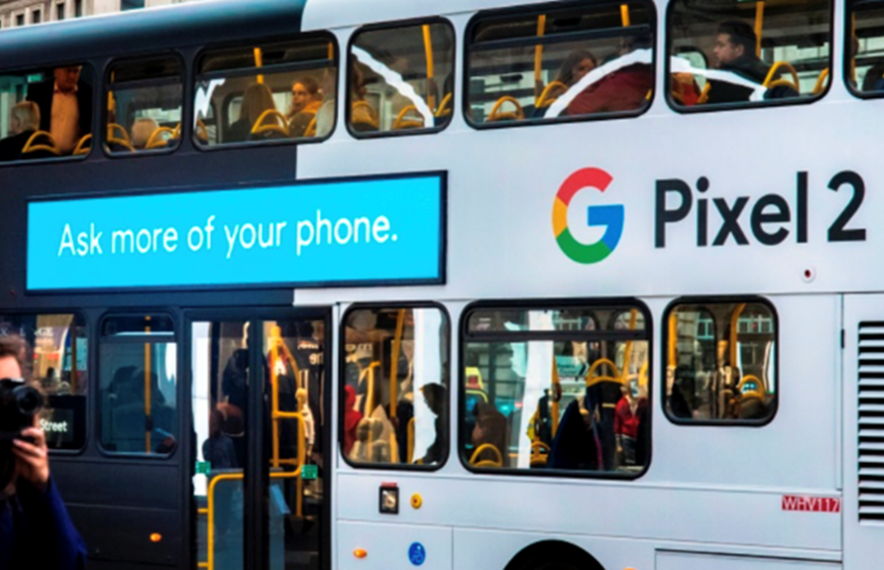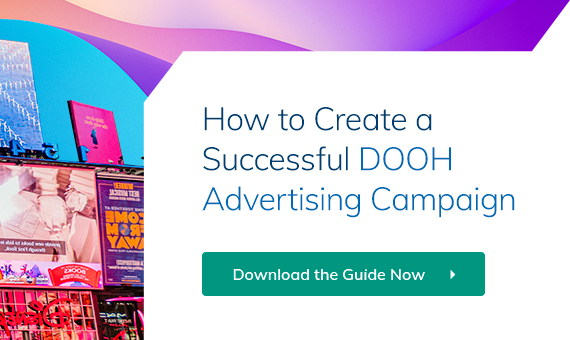In today’s crowded marketplace, small to mid-sized businesses (SMBs) need high-impact advertising strategies to stand out.
One of the most effective ways to increase brand awareness and consumer engagement is through out-of-home (OOH) advertising, particularly digital out-of-home (DOOH) formats. By leveraging different types of OOH advertising, brands can reach audiences in high-traffic locations, reinforce their digital marketing efforts, and create immersive brand experiences.
Unlike traditional static billboards, modern types of DOOH advertising – such as digital billboards, transit screens, point-of-sale displays, and place-based digital media – allow advertisers to deliver dynamic, data-driven content. These formats offer greater flexibility, real-time updates, and audience targeting, ensuring that brands connect with consumers at the right place and time.
With research showing that every $1 spent on OOH generates nearly $6 in product sales, and with 85% of OOH viewers finding the ads they see useful, integrating different types of DOOH advertising into your clients’ marketing strategies can significantly boost their visibility and ROI.
Types of OOH Advertising
There are four main types of OOH advertising, namely:
- Billboards
- Transit ads
- Digital screens at Points of Sale (PoS)
- Place-based advertising
Each of these can significantly enhance brand awareness and help businesses reach a wide audience in a number of ways.
How Billboards Increase Brand Visibility and Customer Awareness
Billboards remain one of the most recognizable types of OOH advertising, offering high-impact visibility in urban centers, highways, and commercial districts. With advancements in digital out-of-home (DOOH) technology, billboards have evolved beyond static images into dynamic, data-driven displays that engage audiences in real-time.
Modern digital billboards allow brands to rotate multiple ad creatives, adjust messaging based on time of day, weather, or live events, and incorporate interactive elements like QR codes to drive immediate consumer action. For example, a fast-food chain can display breakfast deals in the morning and switch to dinner promotions in the evening, ensuring relevant messaging throughout the day.
Beyond their flexibility, digital billboards serve as a powerful omnichannel marketing tool. They reinforce online campaigns by driving traffic to websites, social media, or e-commerce platforms. Brands can also retarget consumers who’ve viewed an OOH ad with digital ads on mobile devices, creating a seamless transition from outdoor exposure to online engagement.
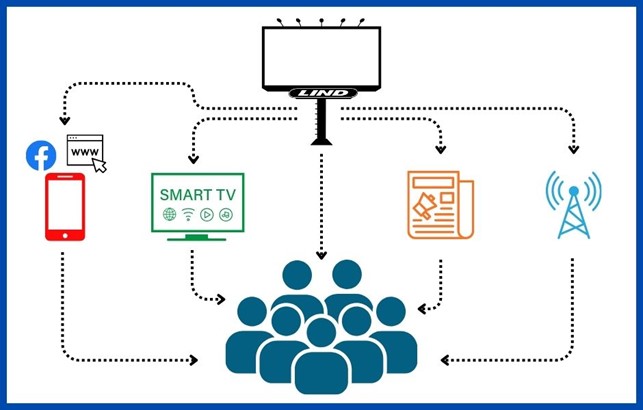
[Image source: Lind Media]
For agencies managing mid-sized brands, strategic billboard placements offer an effective way to increase reach, build brand recognition, and complement digital marketing efforts. By integrating digital billboards with other types of DOOH advertising, businesses can create highly visible, engaging, and measurable marketing campaigns that maximize ROI.
How Transit Ads Help Businesses Reach a Wider Audience
Transit advertising is one of the most effective types of OOH advertising for reaching a diverse, mobile audience. By placing dynamic digital ads on buses, trains, taxis, and transit hubs, brands can engage commuters, pedestrians, and city dwellers throughout their daily routines. This format benefits from long dwell times in waiting areas, as well as repeated exposure for passengers who encounter the same ad multiple times a day.
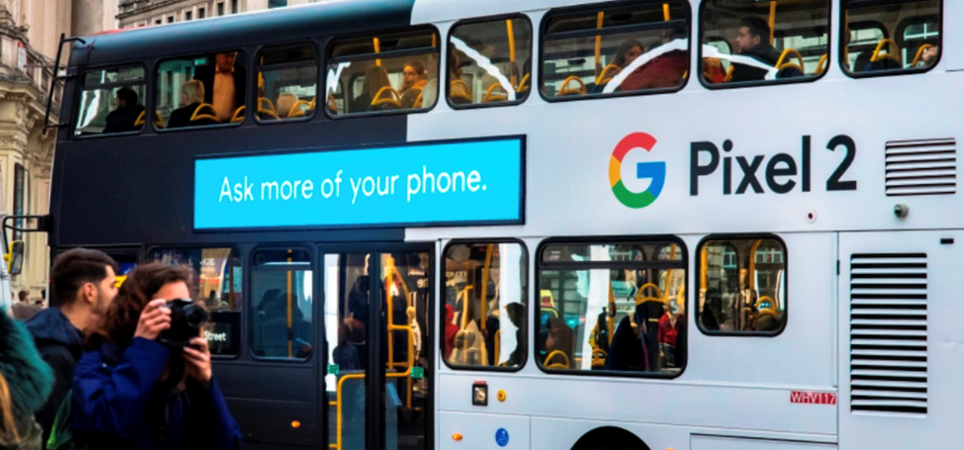
Unlike traditional static transit ads, DOOH-enabled transit advertising allows for targeted, data-driven messaging. Brands can schedule ads based on time of day, commuter demographics, or location, ensuring maximum relevance. For example, a streaming service can promote morning news shows during rush hour, then switch to entertainment content in the evening, aligning with audience interests at different times of the day.
As with digital billboards, interactive elements like QR codes, real-time updates, and geotargeting can bridge the gap between offline and digital engagement. A retail brand advertising on a digital taxi-top screen can display different promotions based on the neighborhood the taxi is passing through, offering personalized messaging to specific audiences.
For agencies managing multi-channel campaigns, transit advertising provides a unique opportunity to integrate OOH with digital marketing strategies. By combining transit screens with other types of DOOH advertising, brands can create a cohesive, high-exposure campaign that reaches consumers in both public and digital spaces.
How Digital Screens at PoS Drive Consumer Action
Among the most influential types of OOH advertising, digital screens at Points of Sale (PoS) capitalize on high-intent moments when consumers are already in a purchasing mindset. Placed in retail stores, supermarkets, and checkout areas, these screens provide a powerful last-minute push to influence buying decisions.
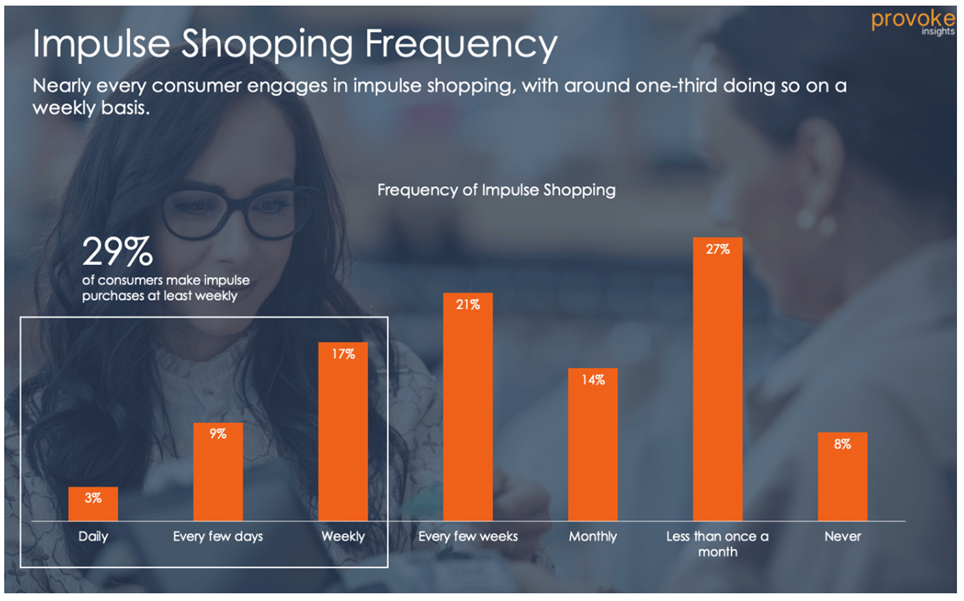
(Image source: p2pi.com)
Research shows that over 70% of purchasing decisions are made in-store, while up to 29% of shoppers make at least one impulse purchase a week. This makes PoS digital screens an ideal tool for upselling, cross-selling, and promoting impulse purchases. Brands can highlight special offers, product bundles, or limited-time discounts, nudging shoppers toward additional purchases.
For example, a grocery store can use PoS screens to promote a complementary dip when a customer picks up a bag of chips, increasing basket size without disrupting the shopping experience.
Beyond promotions, PoS screens enhance brand storytelling, allowing businesses to communicate product benefits, sustainability initiatives, or customer testimonials in an engaging format. Unlike static signage, DOOH-powered PoS displays can be updated in real time, ensuring that brands can adapt to changing inventory levels or seasonal trends.
By integrating PoS digital screens with other types of DOOH advertising, businesses can create a seamless omnichannel experience. A brand running an outdoor digital billboard campaign can reinforce its messaging at the final stage of the customer journey, ensuring consistency from brand awareness to point-of-purchase conversion.
How Place-based Advertising Can Drive Consumer Engagement
As one of the most versatile types of OOH advertising, place-based advertising allows brands to connect with highly targeted audiences in specific, high-traffic locations where consumers are more likely to engage with messaging. These digital displays are strategically placed in shopping malls, gyms, airports, movie theaters, coffee shops, and other venues where people naturally spend extended amounts of time.
Consumers in these environments are often in a leisurely or waiting mode, making them more receptive to branded messaging, special promotions, and interactive experiences. A sportswear brand, for example, can display dynamic ads on gym screens, showcasing new running shoes while gym-goers are actively thinking about fitness and performance.
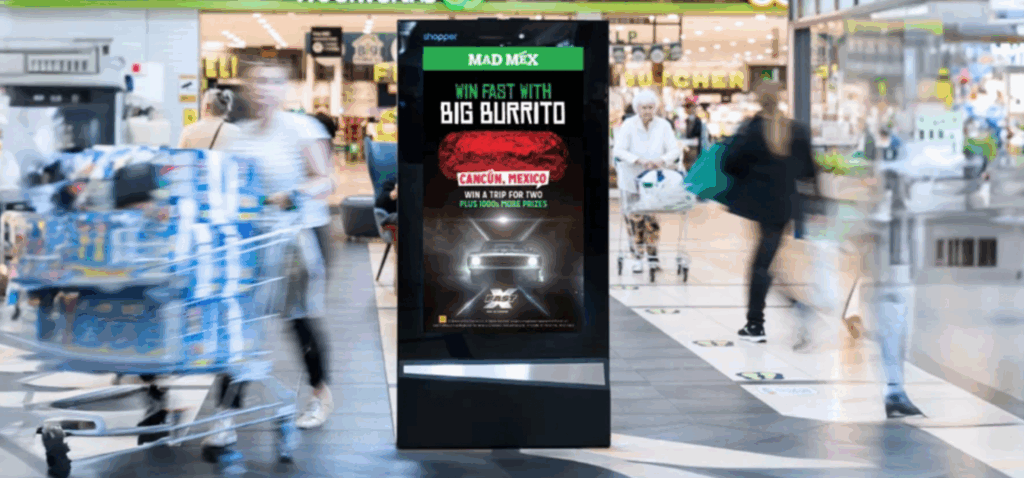
Another advantage of place-based DOOH is its ability to integrate with location-based targeting and interactive technology. Brands can sync digital screens with mobile campaigns, using geofencing to deliver follow-up ads to consumers’ smartphones after they leave a venue. A coffee brand advertising inside a café, for instance, could later retarget customers with a mobile ad offering a discount on their next visit.
When combined with other types of DOOH advertising, place-based screens create a seamless brand journey, reinforcing messaging across multiple touchpoints. A brand running a digital transit campaign can extend its presence inside malls or entertainment venues, ensuring continued visibility as consumers go about their day. This consistent, cross-channel exposure strengthens brand recall and drives deeper engagement.
Bringing It All Together with Programmatic DOOH
The effectiveness of all types of OOH advertising hinges on one crucial factor: the ability to deliver the right message, to the right audience, at the right time. This level of precision and flexibility is only possible with a programmatic DOOH (pDOOH) platform.
By leveraging real-time data, automation, and dynamic bidding, programmatic DOOH ensures maximum efficiency and impact. Brands can adjust campaigns instantly based on foot traffic patterns, weather conditions, audience demographics, and even live events. Instead of relying on static ad placements, marketers can optimize their OOH campaigns in real-time, ensuring every impression counts.
Specializing in pDOOH, The Neuron empowers brands and agencies to plan, book, and optimize DOOH campaigns seamlessly. With smart bidding technology and extensive SSP access, The Neuron helps advertisers secure high-impact placements at the best possible cost, maximizing reach while minimizing waste.
To learn more about using The Neuron for the different types of OOH advertising in your clients’ portfolios, visit our website.
